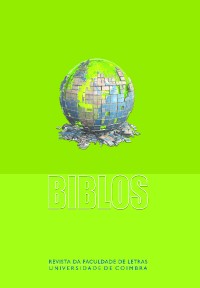Please use this identifier to cite or link to this item:
https://hdl.handle.net/10316.2/32311| Title: | O fascínio da utopia: la città del Sole de Tommaso Campanella e a representação poético-filosófica da cidade | Authors: | Ferro, Manuel | Keywords: | Utopia;Tommaso Campanella;Cidade;Utopia;Tommaso Campanella;Town | Issue Date: | 2012 | Publisher: | Faculdade de Letras da Universidade de Coimbra | Abstract: | Inserted in a several centuries old literary tradition in which the celebration
of the town in encomiastic terms exalts the daily, civic and religious life of the existing urban centers, La Città del Sole (The Sun City), by Tommaso
Campanella, counterpoints an universal theocratic project based on a natural
religion, ruled by strict rational principles and made viable by a council
constituted by wise high priests. Besides the importance it holds within the
field of the 17.th century political thought, it stands as a reference in the sphere
of the utopian expression of the ideal city-state, revelation of the mystical and
prophetic capability of the author, in coherence and in strict relation with the
eschatological believes, in which he trusted such an enthusiastic faith. Relying
such a steady belief upon the providential mission of the enlightenment and
the intervention that fitted him in the instauration of a new pattern of relations
among mankind, to be established in future, Campanella considered that the
moment of that spiritual renewal had arrived, a kind of reinstitution of the
Golden Age, of a new era, which should be started with a total reorganization,
either at a political, or at a social level. The mirage of a happy town,
of love and harmony, in which selfishness is overcome by higher values,
such as common wellbeing, is connected to the exemplary character of the
polis arrangement, through a remarkable organization of work and the sense of
the fulfilled duty. Conciliating its ideals with contingent reality, a new model
of town is so outlined, trying to join the utopian substance and the dreams of
social and political renewal of the author with aspects sometimes orthodox in a
work marked, without any doubt, by exuberance, stubbornness and inquietude,
that will identify the utopian production for the centuries to come, leaving
tracks up to modern times. Inserida num filão literário secular em que a celebração da cidade em termos encomiásticos enaltece a vida quotidiana, cívica e religiosa de centros urbanos existentes, La Città del Sole, de Tommaso Campanella, contrapõe um projecto teocrático universal fundado na religião natural, regido por princípios racionais rigorosos e viabilizado por um conselho de sábios-sumo sacerdotes. Para além do lugar de relevo que ocupa no âmbito do pensamento político do século XVII, é um marco no campo da expressão utópica da cidade-estado ideal, manifestação do alento místico e profético do autor, em coerência e em estreita relação com as crenças escatológicas, em que acreditava entusiasticamente. Depositando uma fé inabalável na missão providencial de iluminação e intervenção que lhe cabia na instauração de um novo modelo de relações entre os homens, a instituir no futuro, Campanella considerava ser chegado o momento da renovação, do restabelecimento da Idade do Ouro, de uma nova era que se deveria iniciar mediante um vasto movimento de insurreição contra o status quo vigente e implicava uma reorganização total, quer a nível político, quer social. A miragem da cidade feliz, do amor e da concórdia, em que o egoísmo é superado por valores mais elevados, como o bem comum, associa-se ao carácter exemplar da orgânica da pólis, mediante a notável organização do trabalho e o sentido do dever cumprido. Conciliando os seus ideais com a realidade contingente, projecta-se aqui um novo modelo de cidade, ao tentar articular a substância utópica e os sonhos de renovação político-social do autor com aspectos, por vezes, ortodoxos, numa obra marcada, sem dúvida alguma, pela exuberância, rebeldia e inquietude, que virá a marcar a produção utópica dos séculos vindouros e a deixar marcas até à actualidade. |
URI: | https://hdl.handle.net/10316.2/32311 | ISSN: | 0870-4112 | DOI: | 10.14195/0870-4112_10_13 |
| Appears in Collections: | Biblos |
Files in This Item:
| File | Description | Size | Format | |
|---|---|---|---|---|
| biblosx_artigo14.pdf | 1.67 MB | Adobe PDF |  |
Items in DSpace are protected by copyright, with all rights reserved, unless otherwise indicated.
